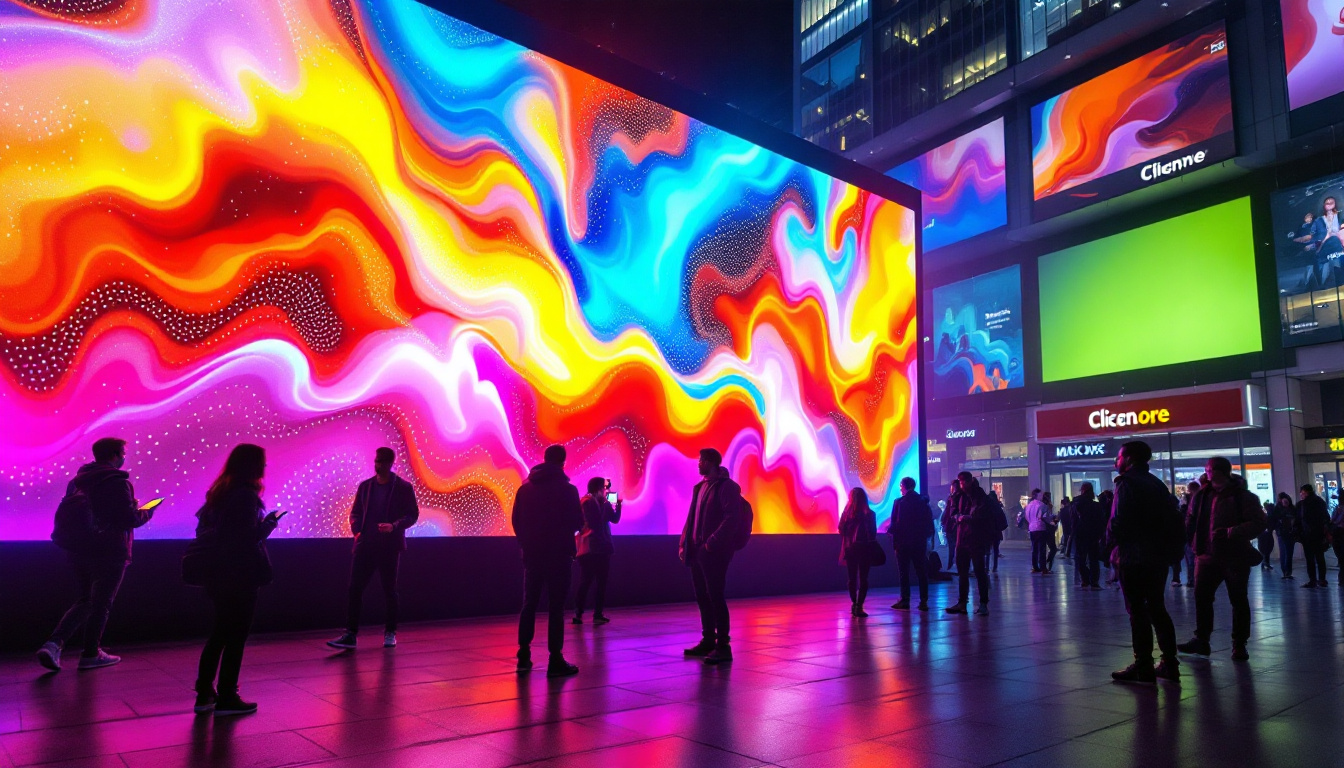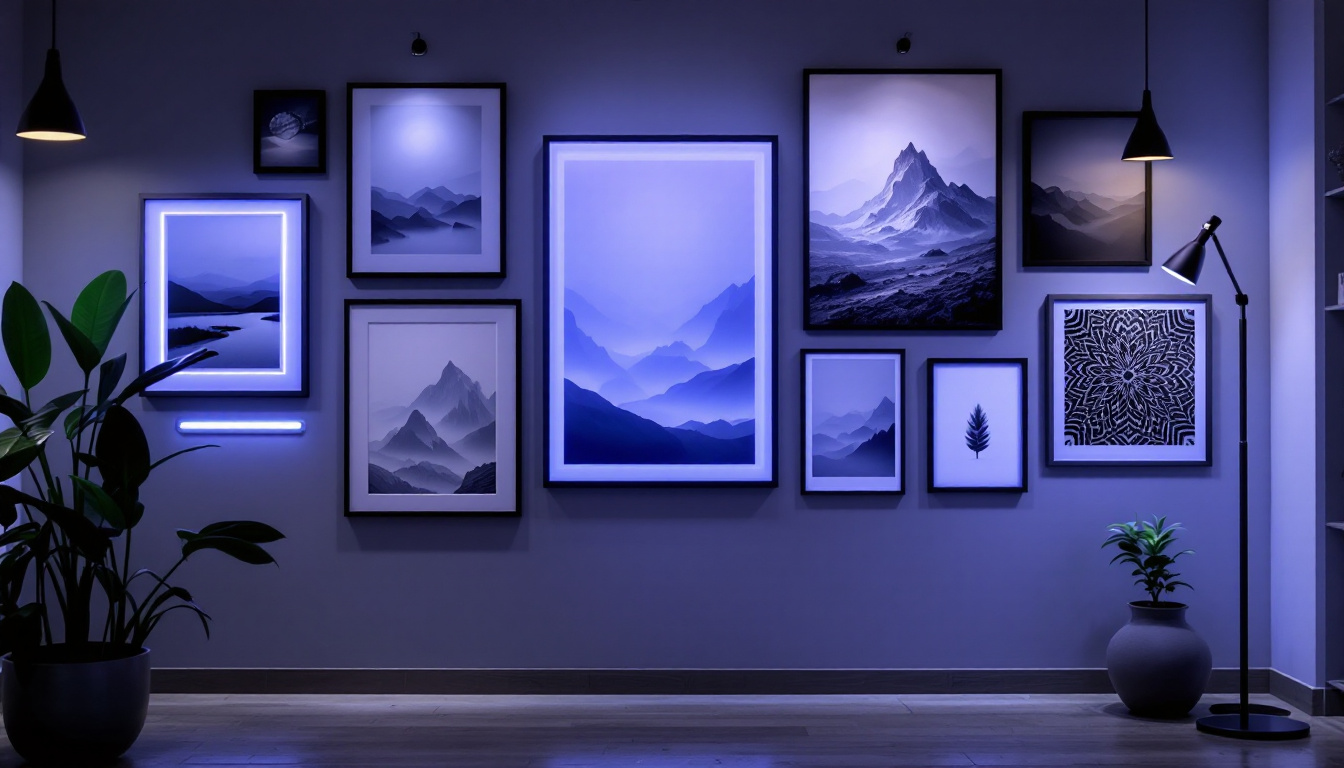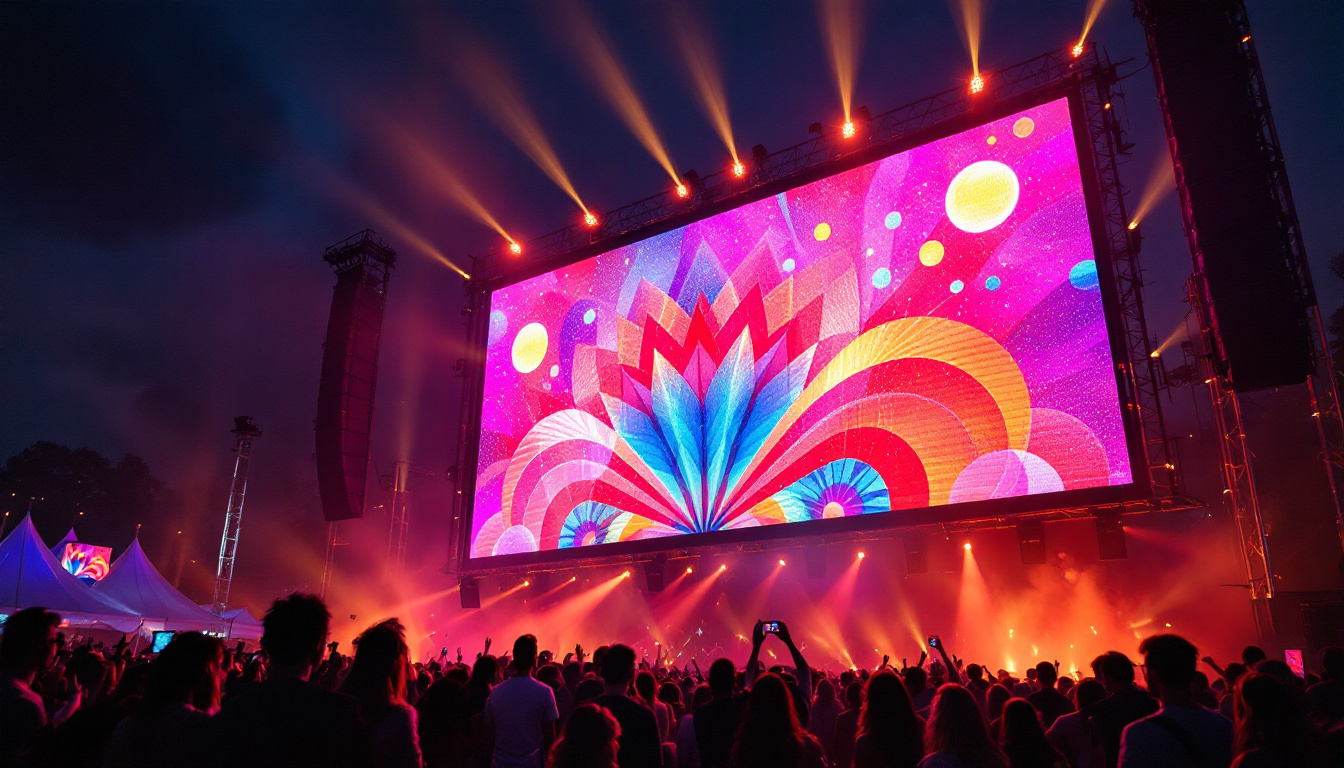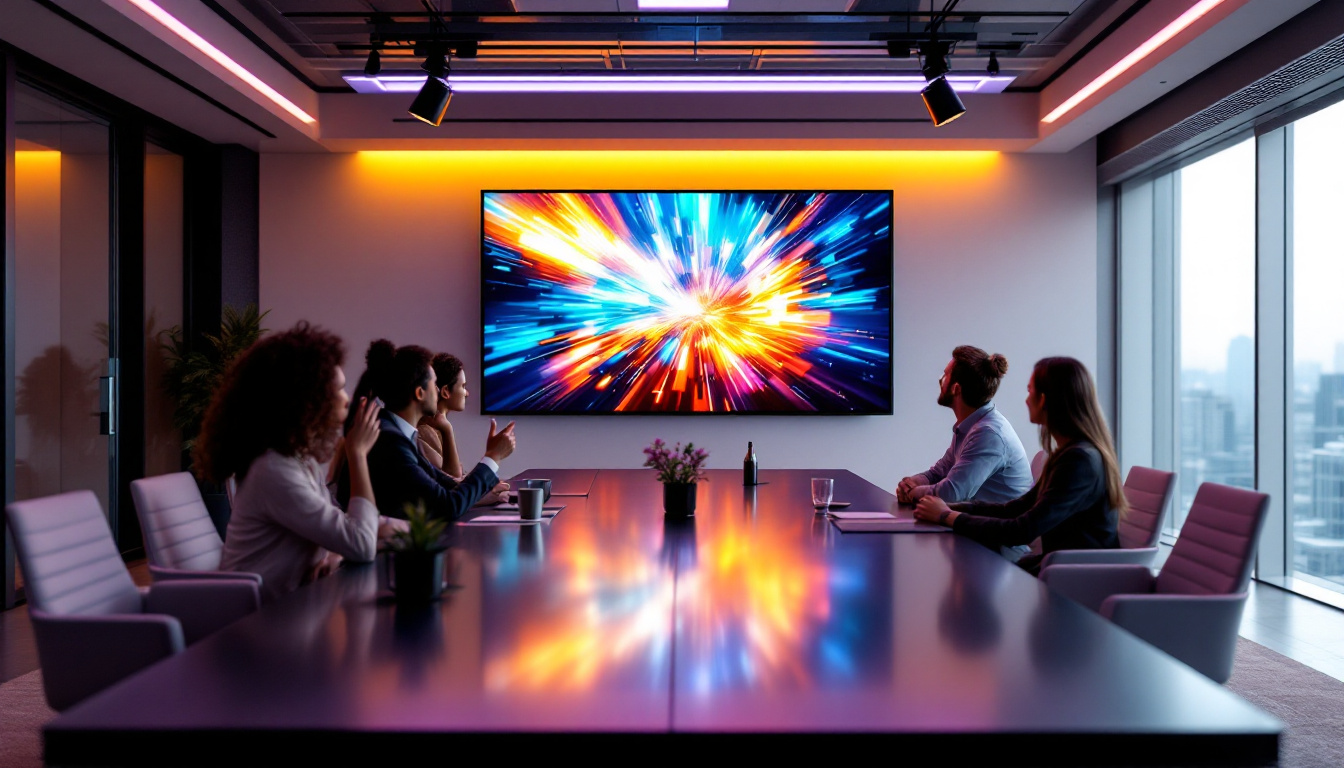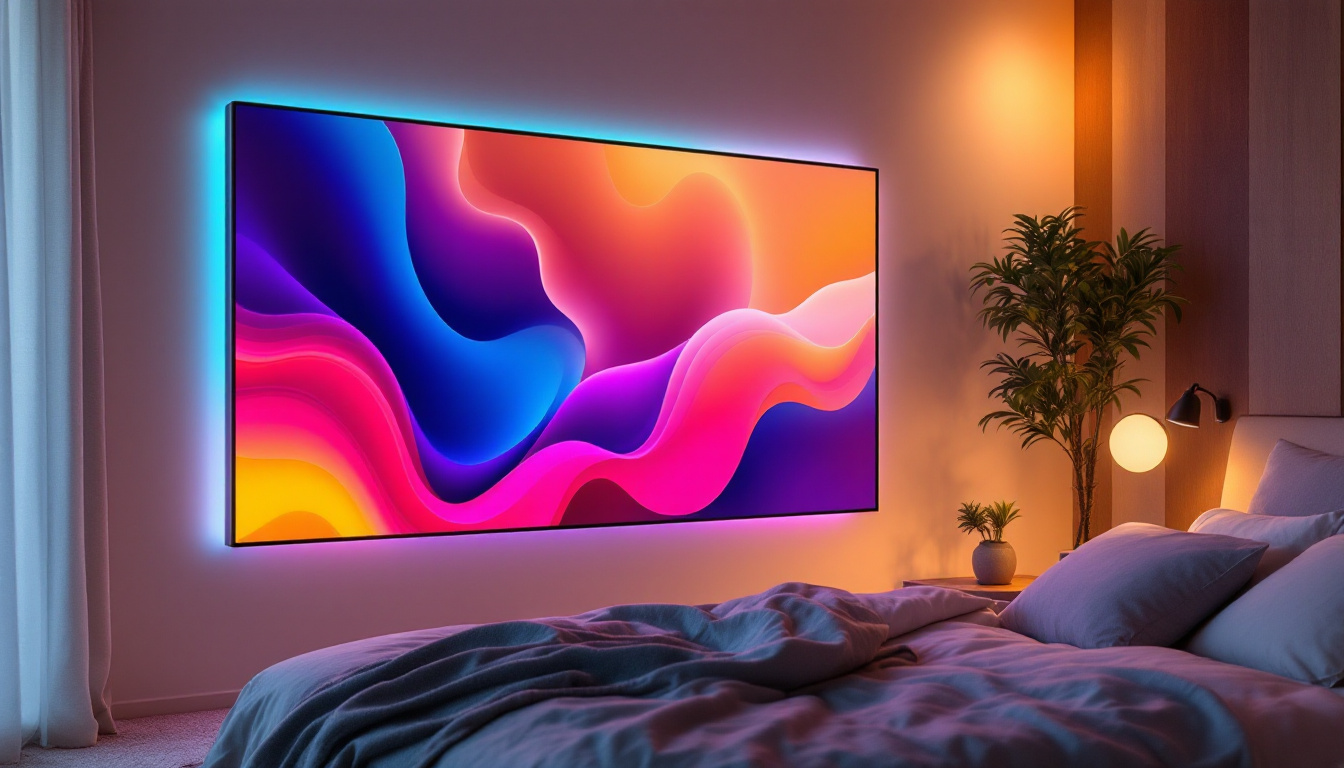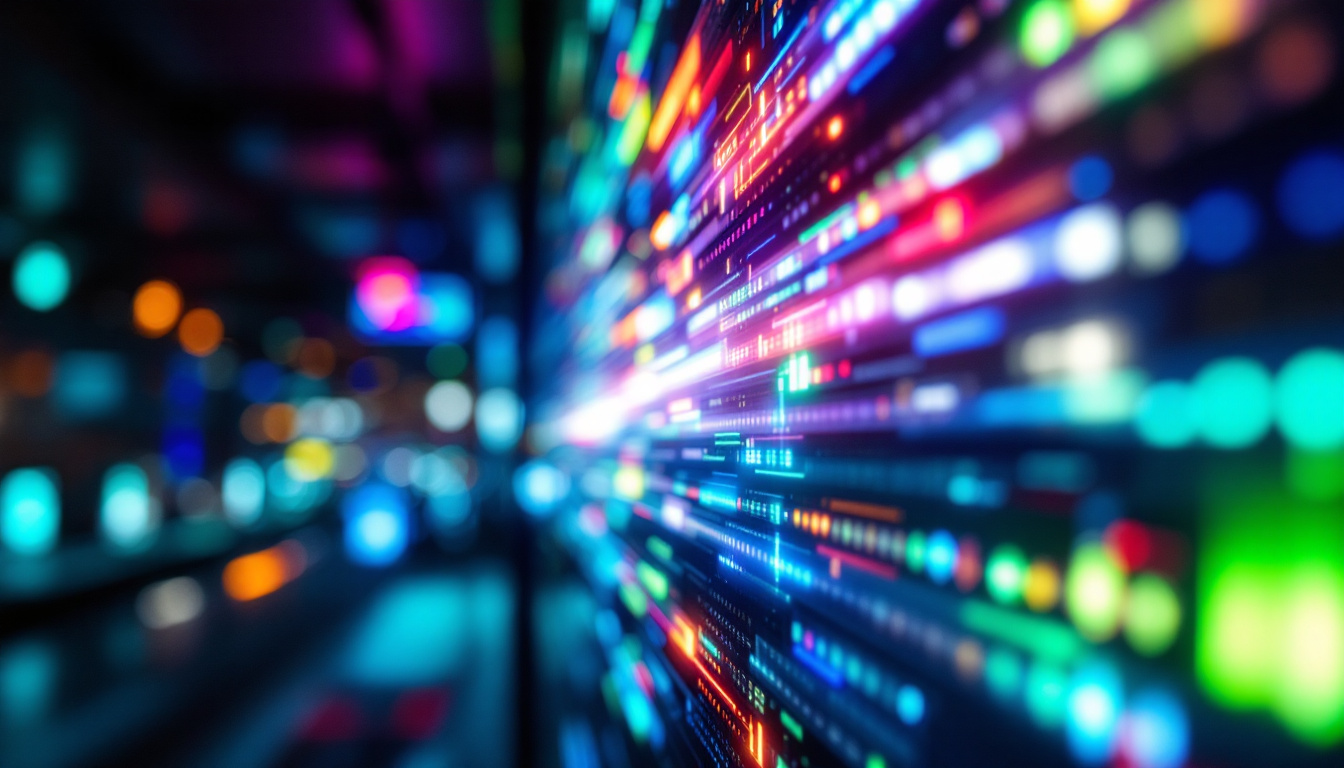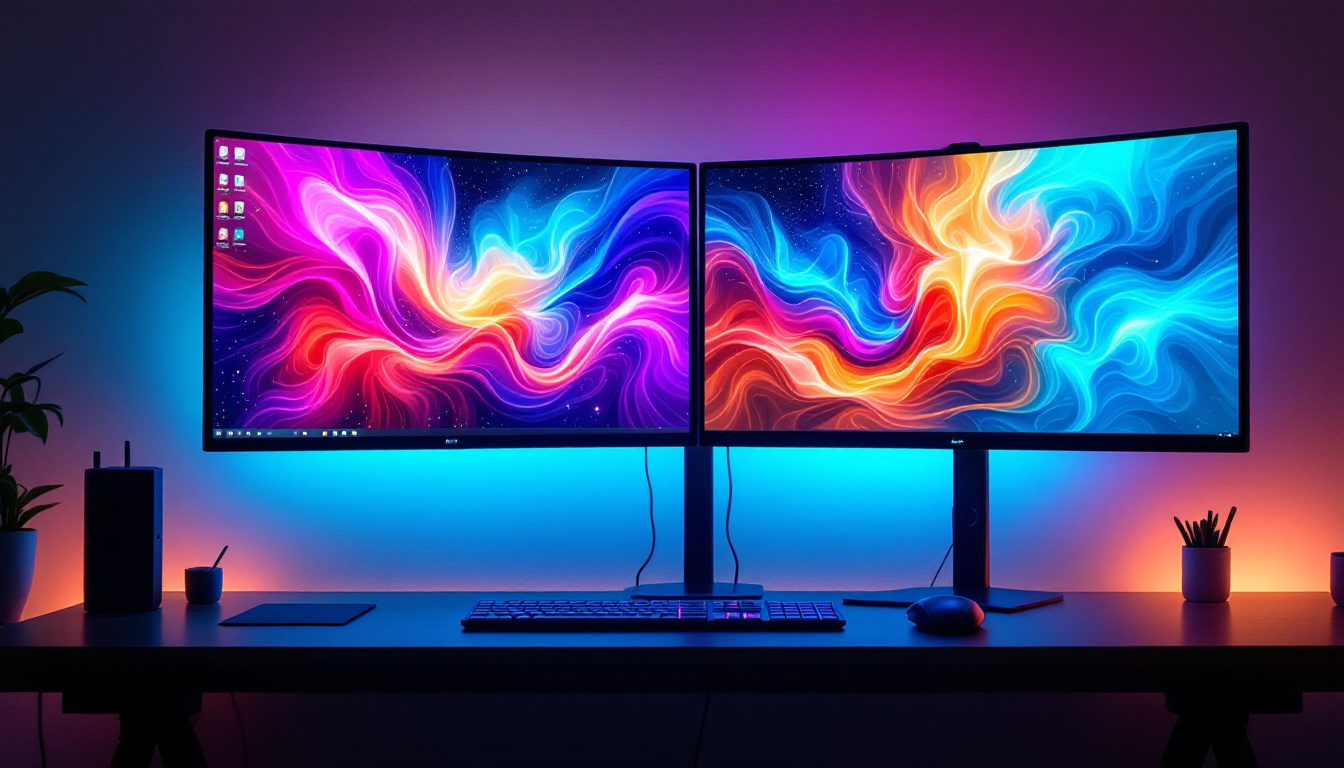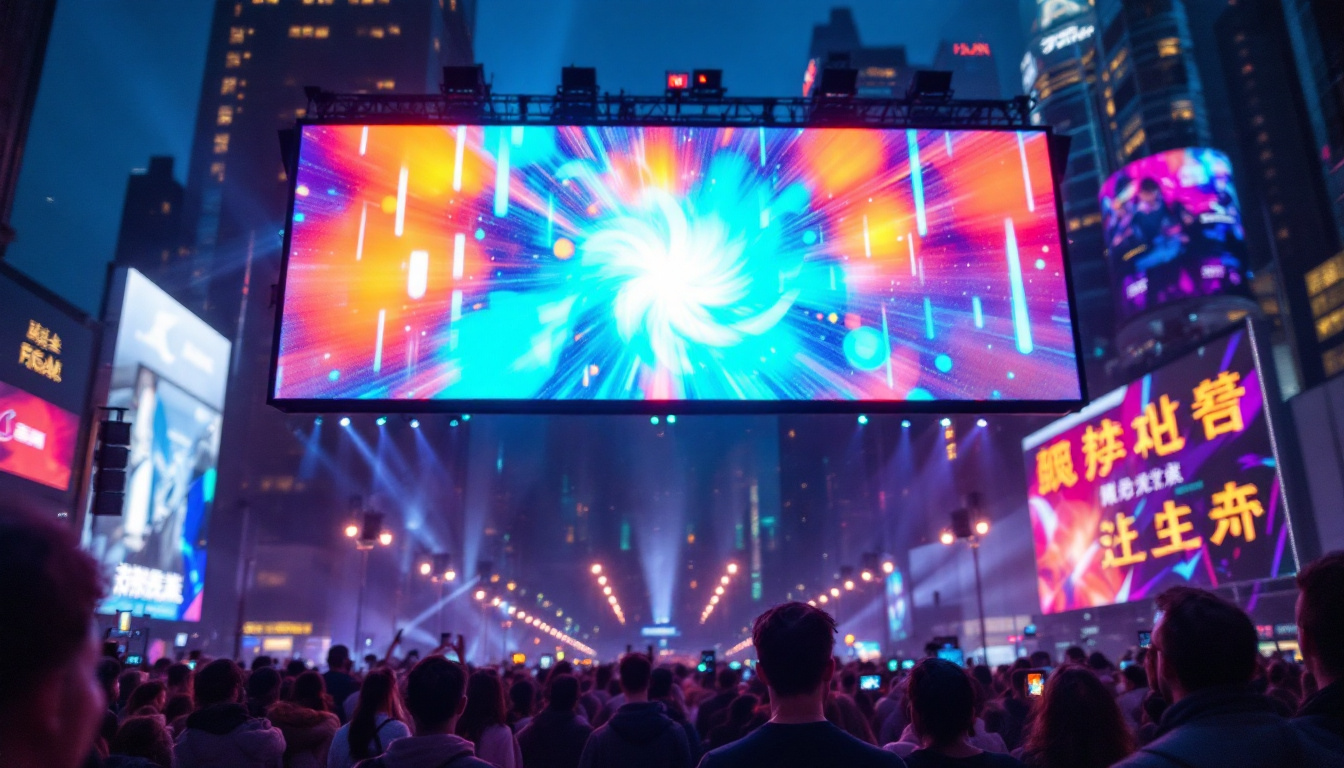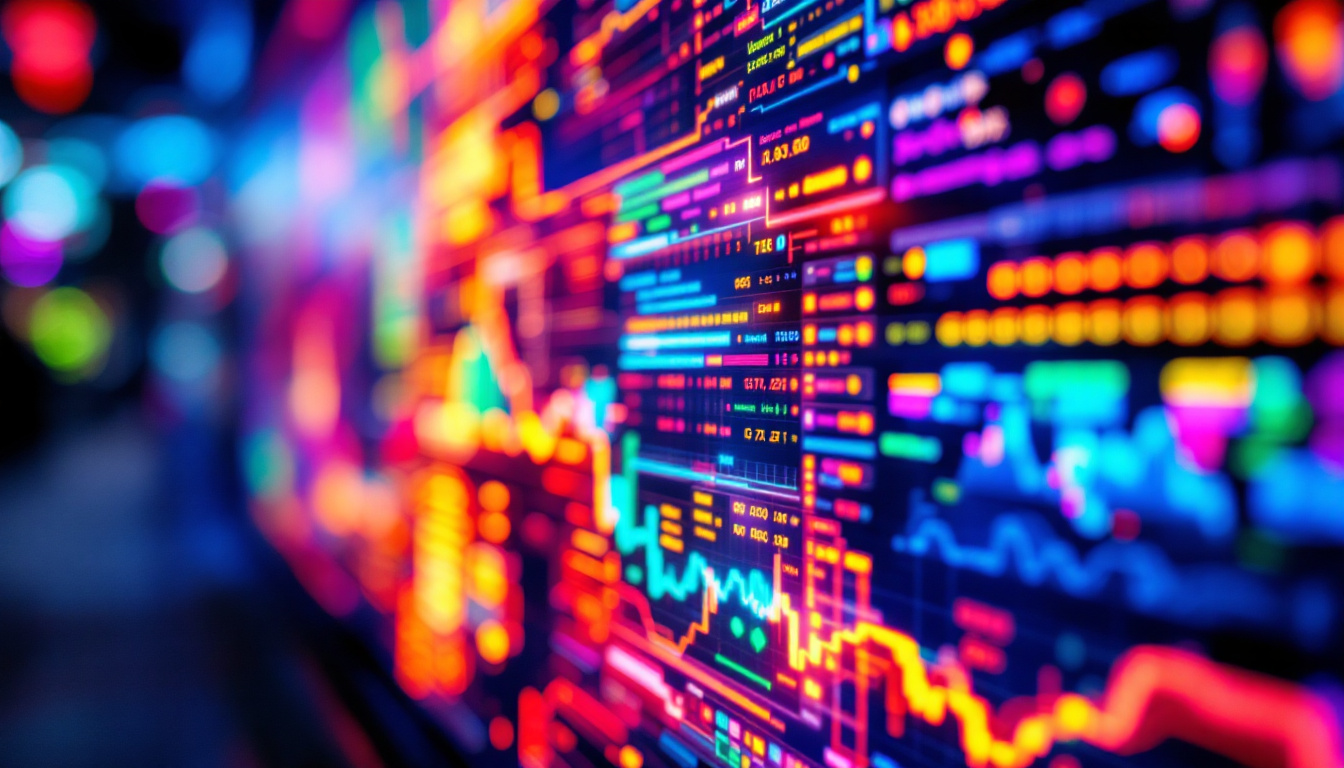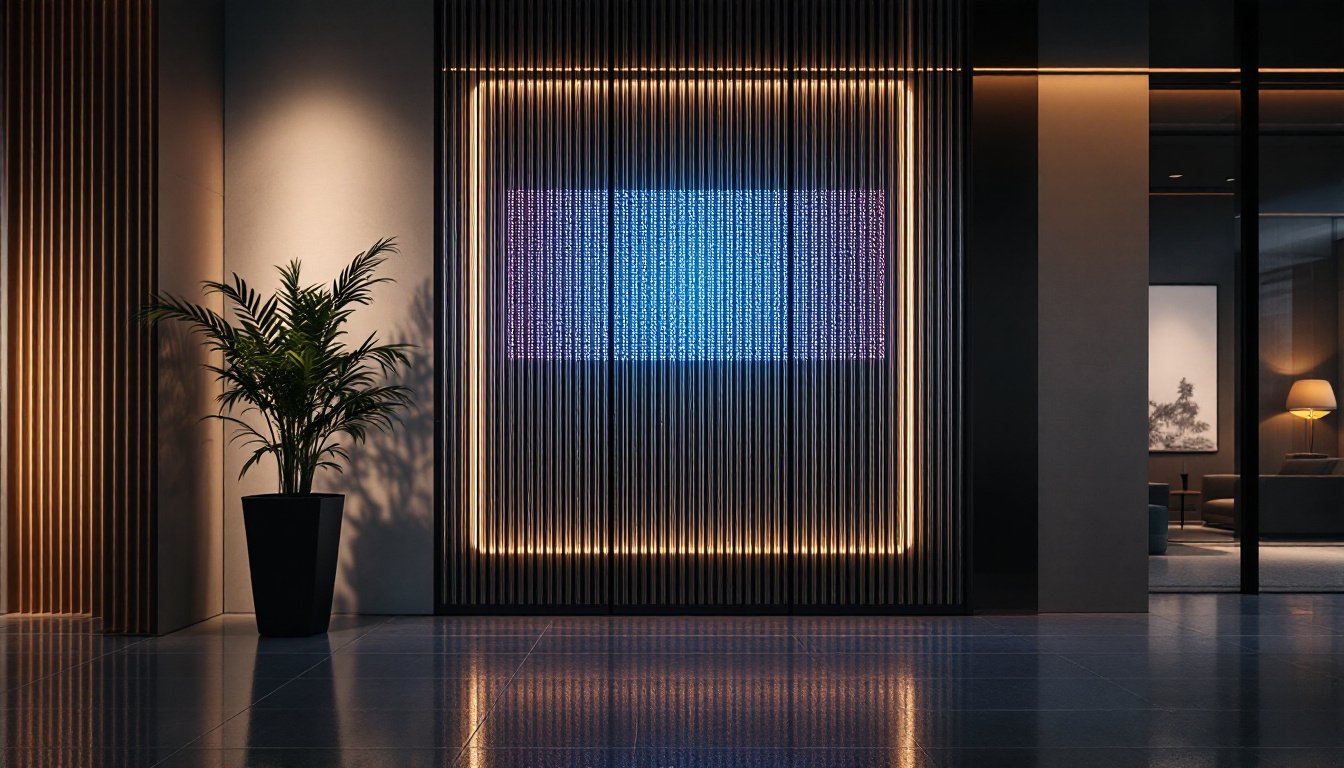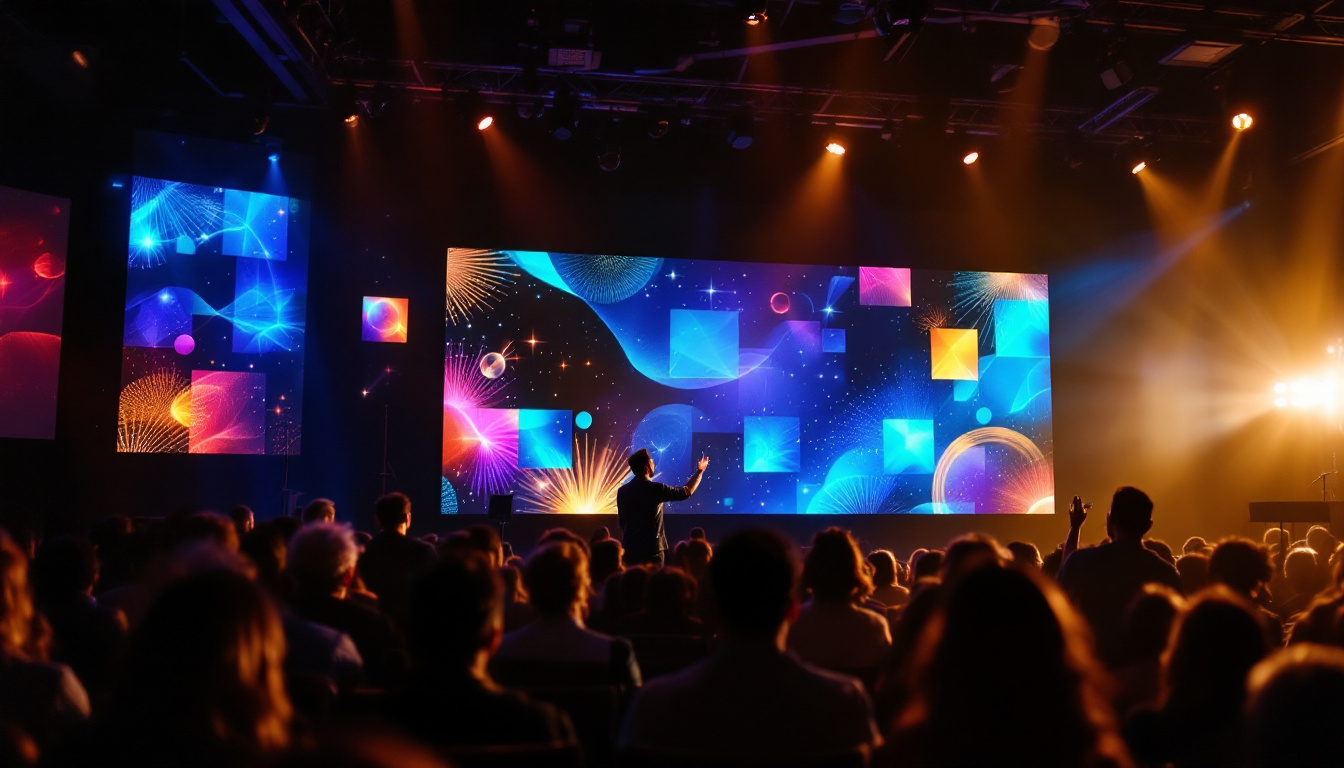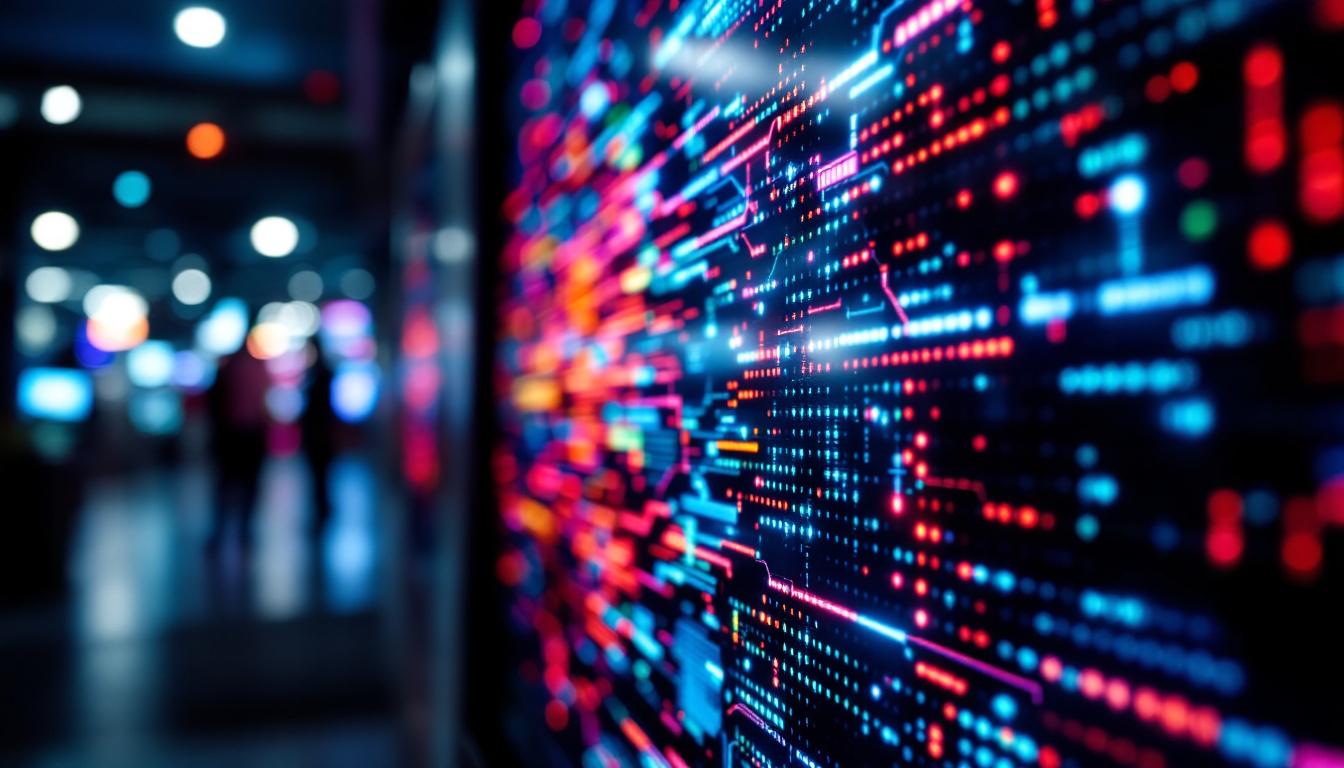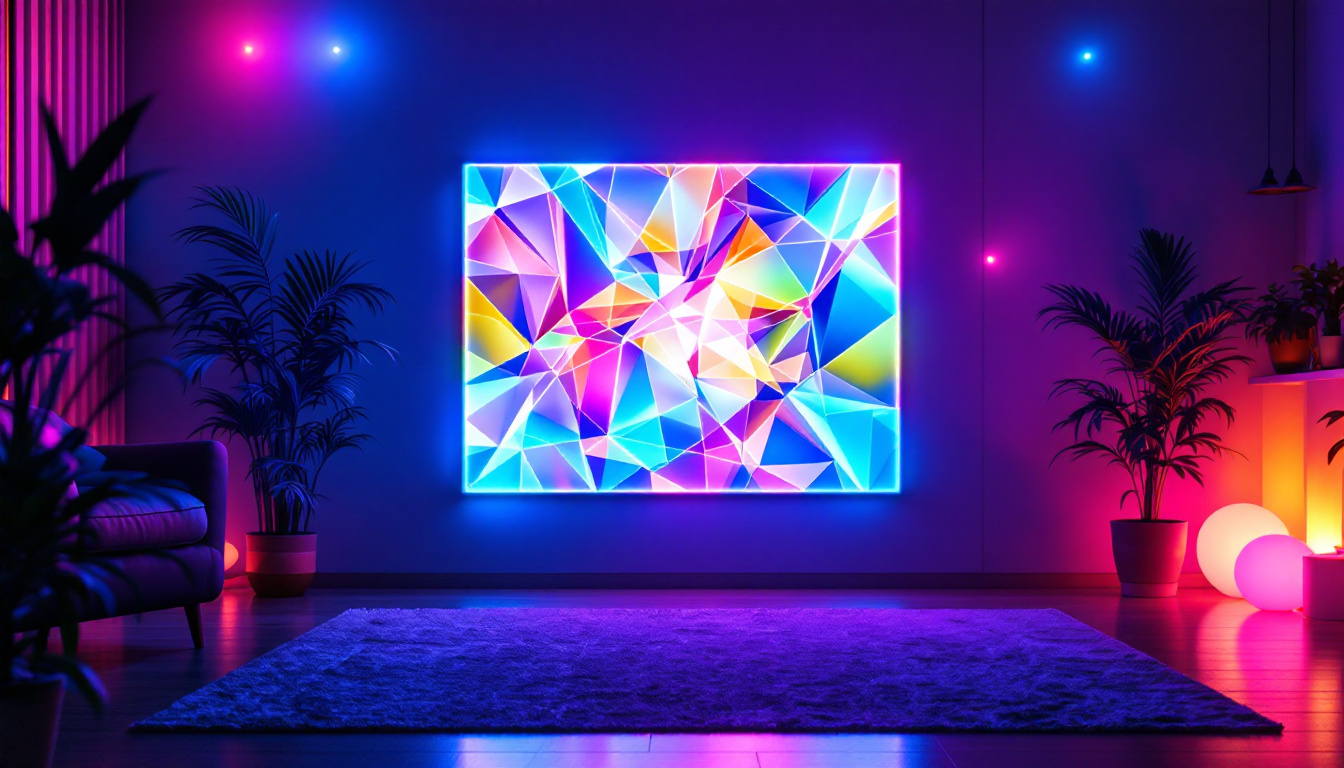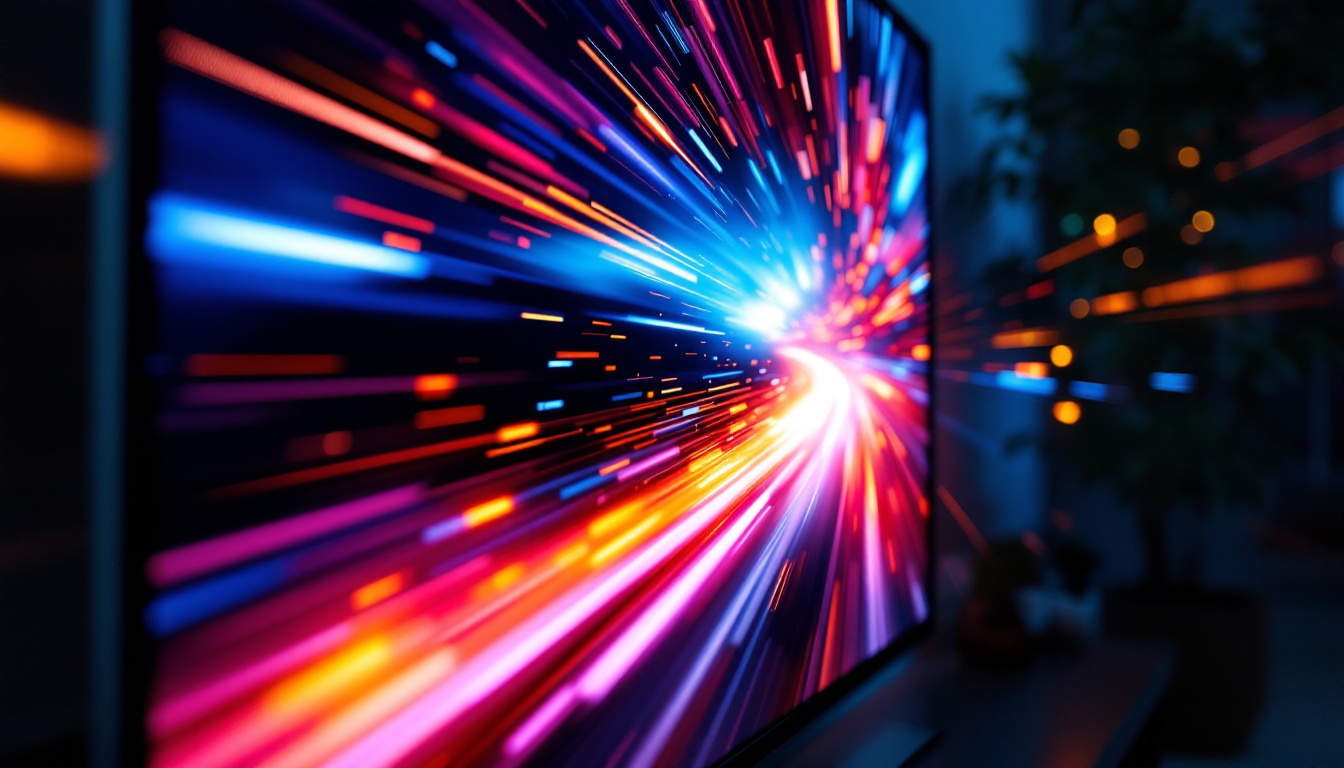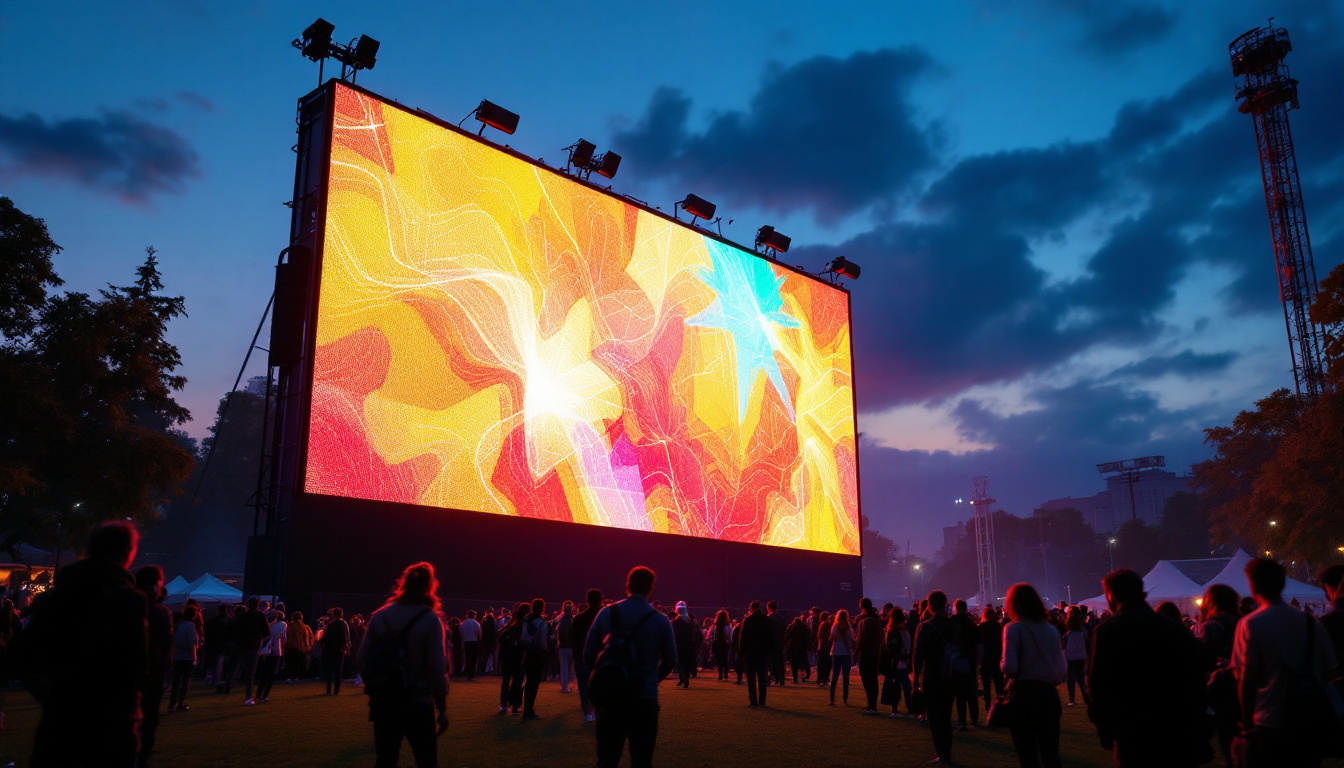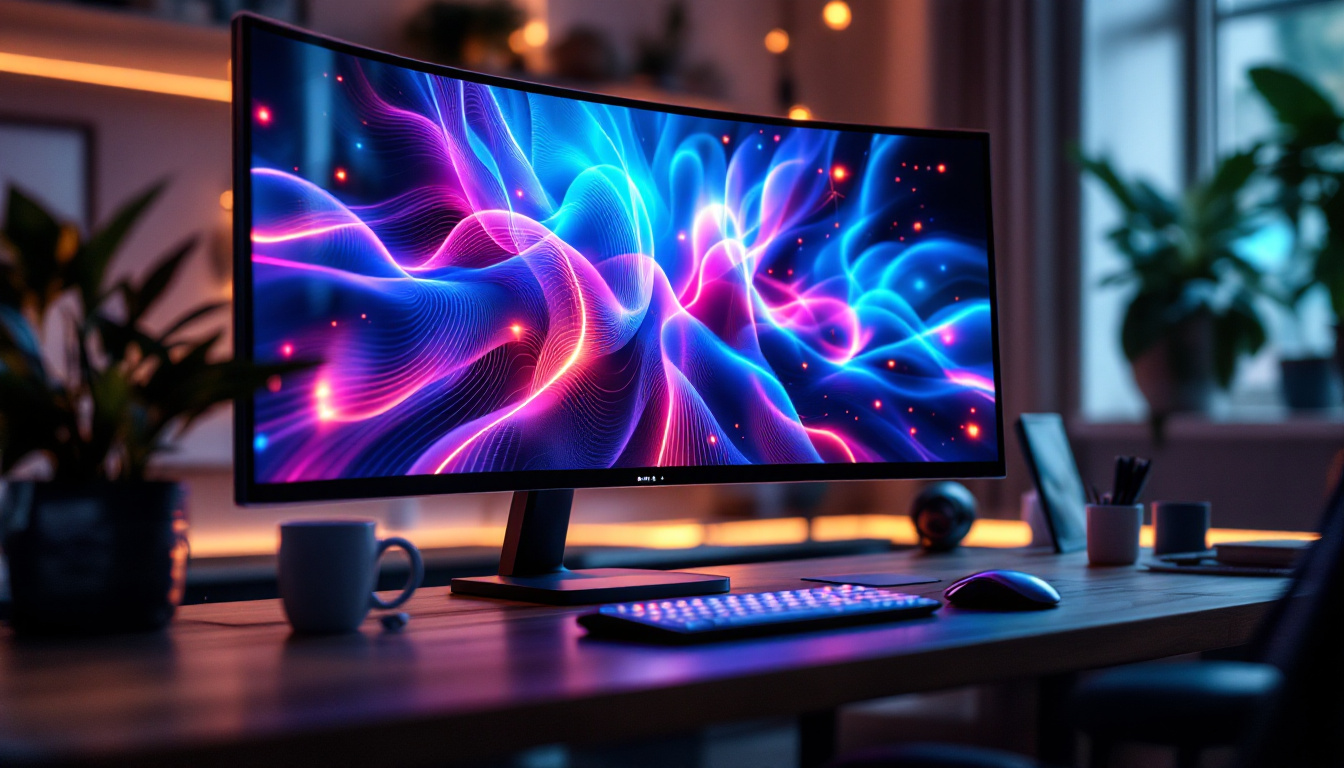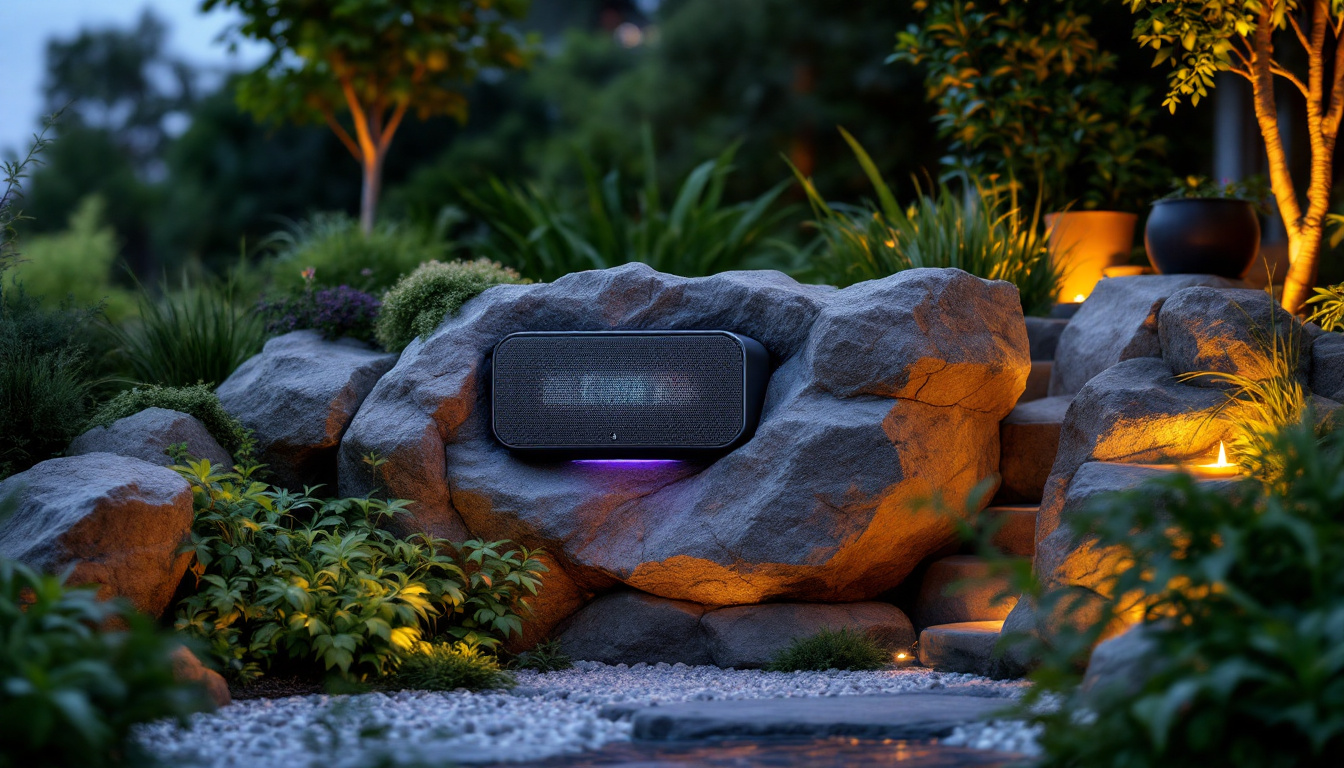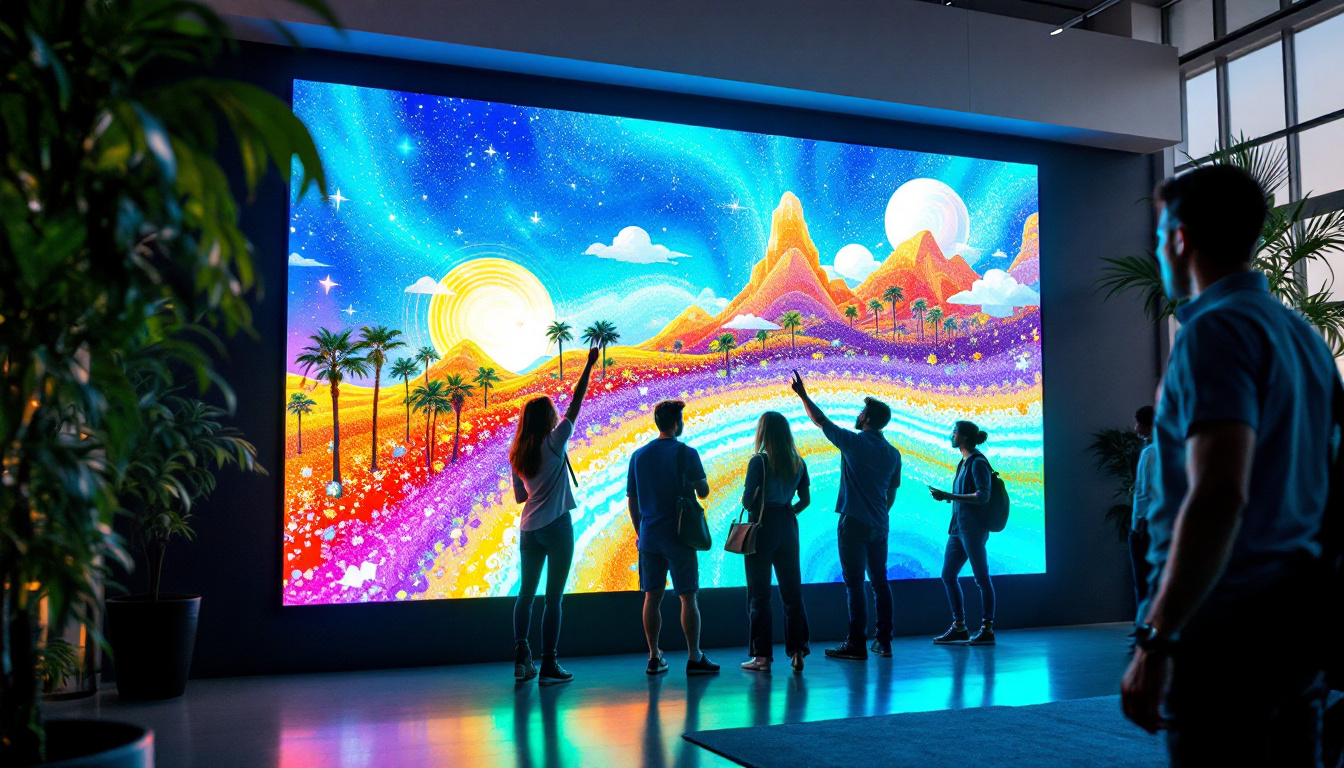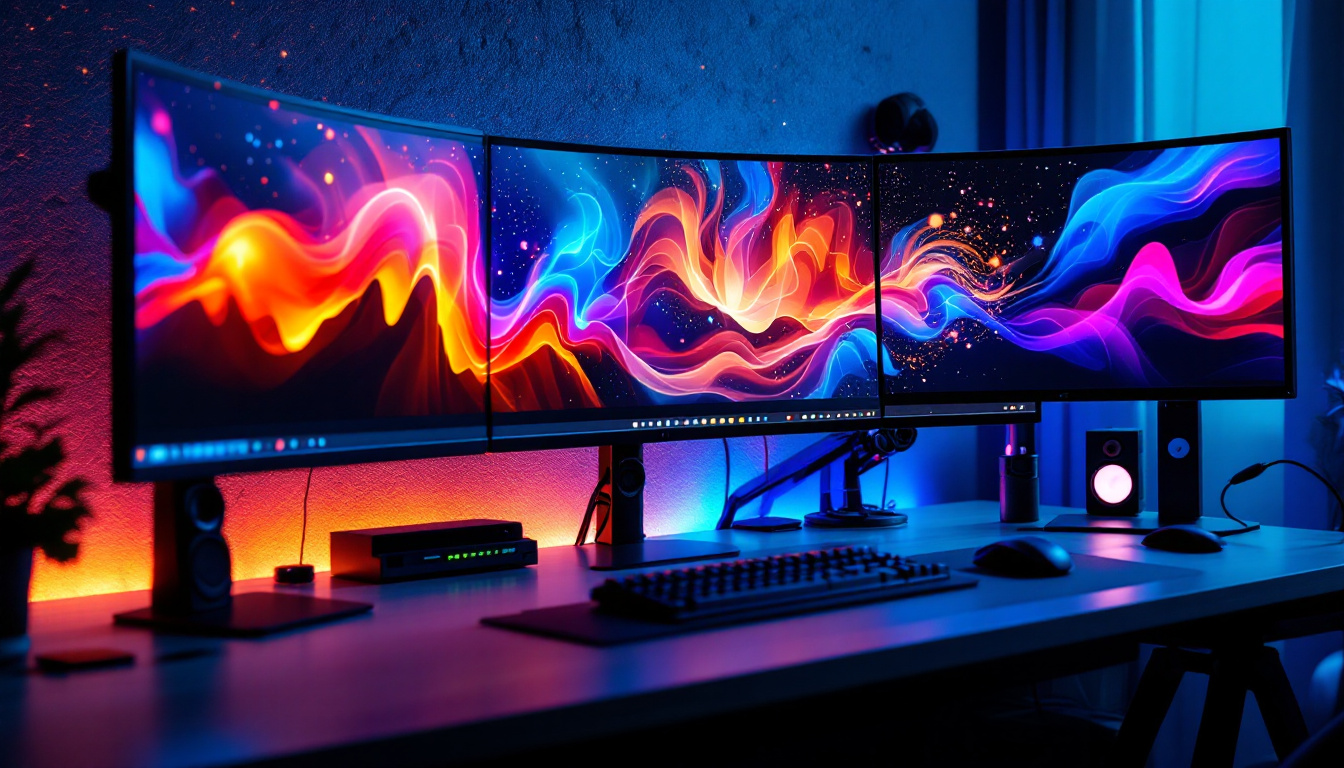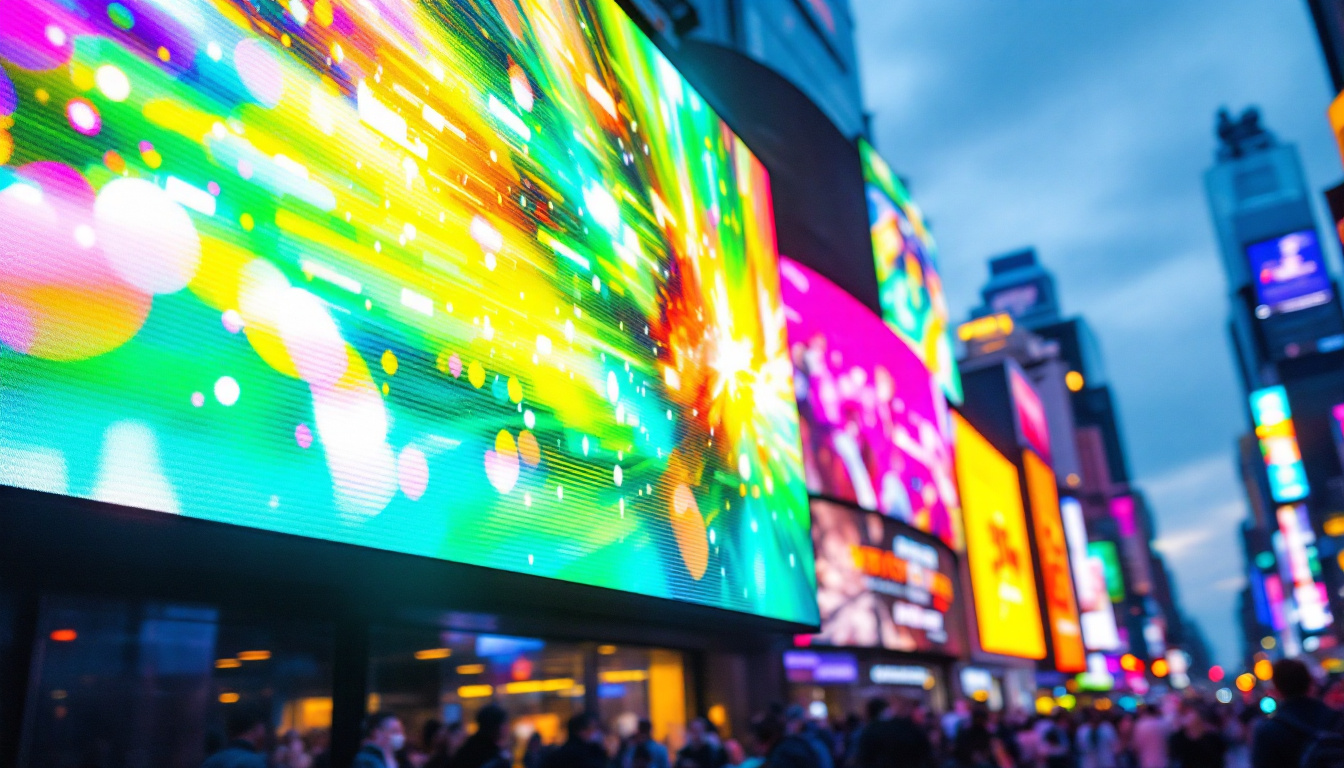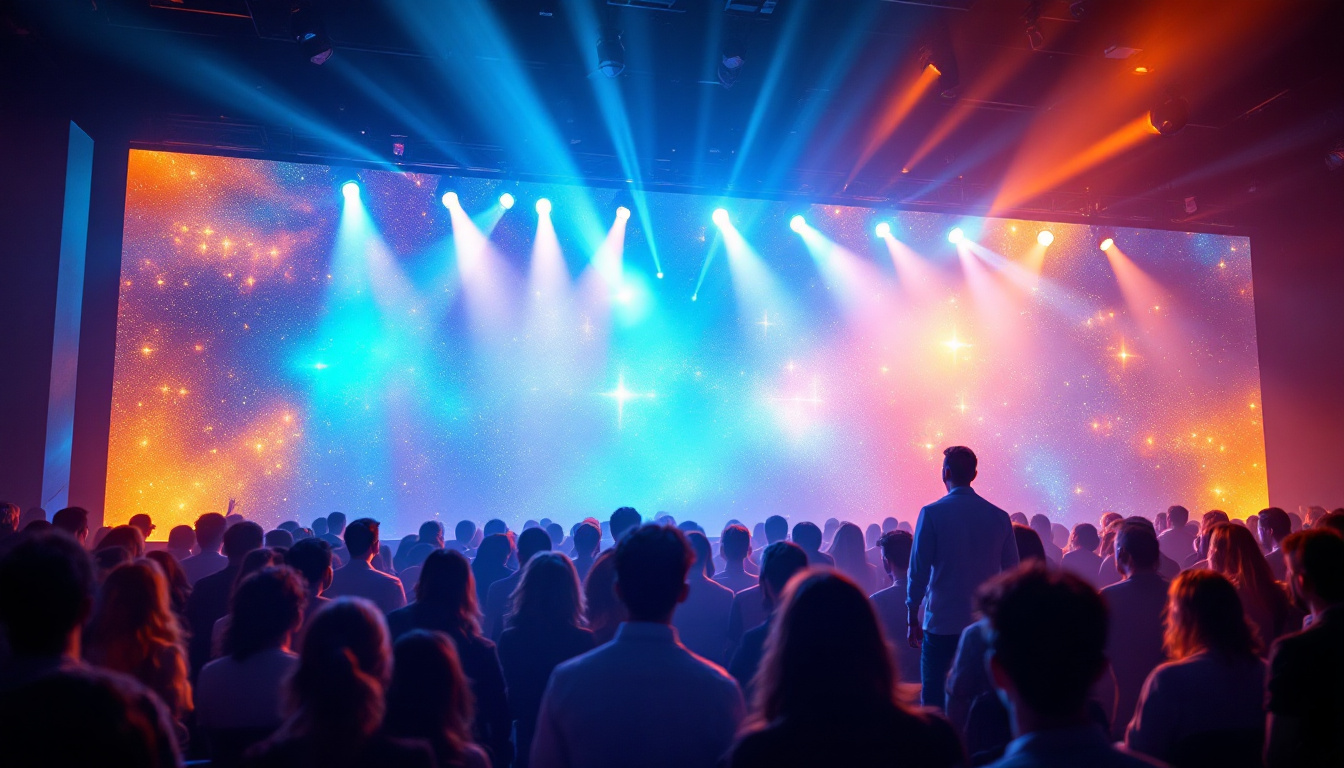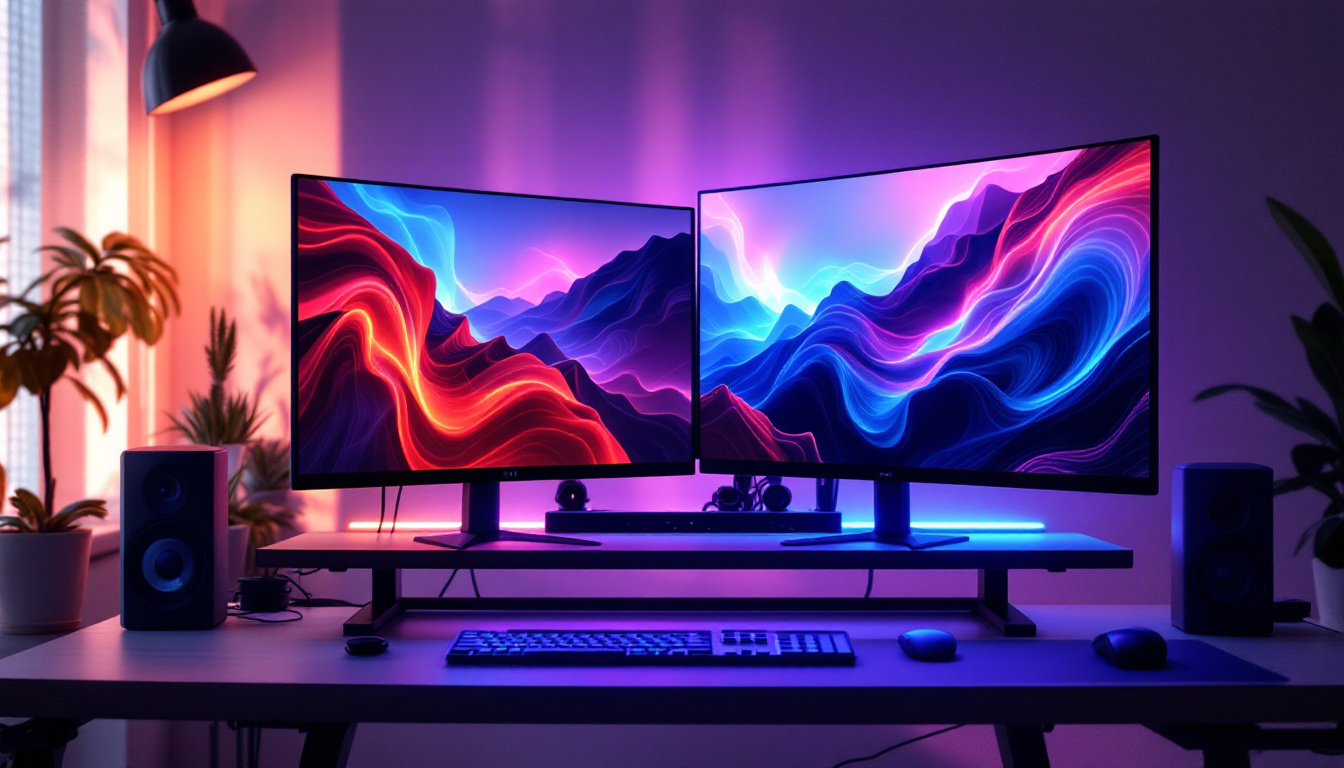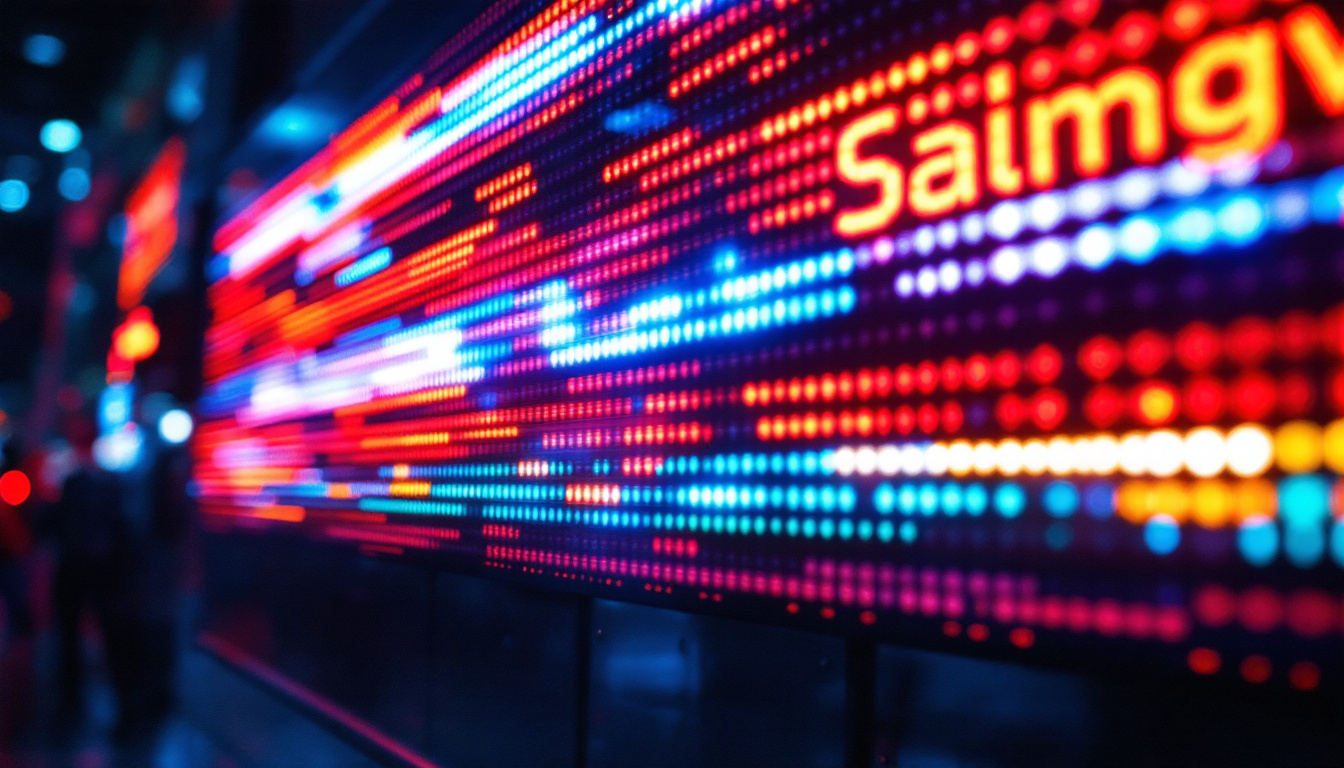In the ever-evolving landscape of technology, LED displays have emerged as a transformative solution for visual communication. From advertising to information dissemination, these displays have redefined how messages are conveyed. This article delves into the intricacies of LED displays, exploring their technology, applications, advantages, and future trends.
Understanding LED Technology
LED, or Light Emitting Diode, is a semiconductor device that emits light when an electric current passes through it. This technology has revolutionized the display industry, offering a range of benefits over traditional display methods. With their energy efficiency and long lifespan, LEDs have become the preferred choice for both commercial and residential lighting solutions, contributing to significant energy savings and reduced environmental impact.
How LED Displays Work
At the core of an LED display is a matrix of tiny LED bulbs that can be individually controlled. Each bulb can produce different colors by adjusting the intensity of the red, green, and blue (RGB) components. By combining these colors, a full spectrum of hues can be created, allowing for vibrant and dynamic visuals. This capability not only enhances the viewing experience but also enables the display of high-definition images and videos, making LED technology ideal for everything from advertising to entertainment.
LED displays can be categorized into two main types: direct view and backlit. Direct view displays consist of individual LEDs that form the image, while backlit displays use LEDs to illuminate a liquid crystal display (LCD) panel. Both types have their unique applications and advantages, catering to various needs in the market. For instance, direct view displays are often used in large-scale outdoor advertising, where brightness and visibility are crucial, while backlit displays are commonly found in televisions and computer monitors, providing excellent color reproduction and contrast.
Types of LED Displays
LED displays come in various forms, each designed for specific environments and purposes. The most common types include:
- Indoor LED Displays: These are designed for use in controlled environments, such as shopping malls, conference rooms, and theaters. They typically have a higher pixel density, providing clearer images at closer viewing distances. The flexibility in design allows for creative installations, such as curved screens that enhance the aesthetic appeal of a space.
- Outdoor LED Displays: Built to withstand the elements, outdoor displays are brighter and more robust, making them suitable for billboards and stadiums. They are engineered to be visible in direct sunlight and can endure harsh weather conditions. Additionally, many outdoor displays are equipped with advanced cooling systems to prevent overheating, ensuring consistent performance even in extreme temperatures.
- Transparent LED Displays: These innovative displays allow for visibility through the screen while still providing vibrant images. They are often used in retail environments, enabling brands to showcase products without obstructing views. This technology not only enhances the shopping experience but also opens up new possibilities for advertising, allowing brands to engage customers in unique and interactive ways.
Another emerging category is the flexible LED display, which can be bent and shaped to fit unconventional surfaces. This adaptability makes them ideal for creative installations in art galleries, museums, and themed environments. The ability to create immersive experiences through dynamic visuals is pushing the boundaries of traditional display technology, making LED displays a crucial component in modern design and architecture.
Applications of LED Displays
The versatility of LED displays has led to their adoption across various sectors. Their applications are vast, ranging from advertising to entertainment and beyond.
Advertising and Marketing
One of the most prominent uses of LED displays is in advertising. Digital billboards, storefront displays, and event signage leverage the dynamic nature of LED technology to capture attention and engage audiences. Advertisers can change content in real-time, tailoring messages to specific demographics or events, which enhances the effectiveness of their campaigns.
Moreover, the ability to display high-resolution images and videos makes LED displays an attractive option for brands looking to make a lasting impression. The vibrant colors and sharp details draw in potential customers, creating a more immersive experience. This adaptability not only allows businesses to promote seasonal sales or limited-time offers but also enables them to experiment with different marketing strategies, analyzing which visuals resonate most with their target audience.
Entertainment and Events
In the entertainment industry, LED displays have become a staple. Concerts, festivals, and sporting events utilize large LED screens to enhance the audience’s experience. These displays provide live feeds, graphics, and animations that complement performances, ensuring that attendees remain engaged.
Additionally, LED technology is increasingly used in theaters and cinemas, where it enhances visual storytelling. The ability to create stunning backdrops and effects using LED panels allows for more creative freedom in production design. Beyond traditional settings, immersive experiences such as virtual reality and augmented reality are being integrated with LED displays, offering audiences a multi-dimensional viewing experience that blurs the lines between reality and performance art.
Corporate and Educational Use
LED displays are also making their mark in corporate and educational settings. In offices, they are used for presentations, video conferencing, and information sharing. Their clarity and brightness ensure that messages are conveyed effectively, regardless of the lighting conditions.
In educational institutions, LED displays facilitate interactive learning. Teachers can use these displays to present information dynamically, making lessons more engaging for students. The ability to display multimedia content enhances comprehension and retention of information. Furthermore, schools are increasingly adopting these technologies for remote learning, allowing educators to connect with students in real-time, regardless of their physical location. This flexibility not only supports diverse learning styles but also prepares students for a future where digital literacy is paramount.
Advantages of LED Displays
The growing popularity of LED displays can be attributed to their numerous advantages over traditional display technologies. These benefits make them a preferred choice for many applications.
Energy Efficiency
One of the standout features of LED displays is their energy efficiency. Compared to traditional incandescent or fluorescent displays, LEDs consume significantly less power. This not only reduces operational costs but also contributes to a smaller carbon footprint, making them an environmentally friendly option.
Longevity and Durability
LED displays are known for their long lifespan. While traditional displays may require frequent replacements, LEDs can last for tens of thousands of hours with minimal degradation in performance. This durability makes them a cost-effective investment in the long run.
Furthermore, LED displays are less susceptible to damage from shocks and vibrations, making them suitable for a variety of environments, including outdoor settings where they may face harsh conditions.
High Brightness and Contrast
Another significant advantage of LED displays is their high brightness and contrast ratio. This ensures that images remain clear and vibrant, even in brightly lit environments. The ability to adjust brightness levels also allows for optimal viewing experiences, whether indoors or outdoors.
Challenges and Considerations
Despite their many advantages, LED displays are not without challenges. Understanding these challenges is crucial for businesses and organizations considering their implementation.
Initial Costs
The initial investment for LED displays can be substantial, especially for large-scale installations. While the long-term savings on energy and maintenance can offset these costs, the upfront expenditure may deter some organizations from making the switch.
Viewing Angles and Pixel Density
Another consideration is the viewing angle and pixel density. While modern LED displays have improved in these areas, some models may still suffer from limited viewing angles, where colors and brightness appear distorted from certain positions. This can impact the effectiveness of the display in large venues.
Additionally, pixel density is crucial for applications requiring high-resolution images. Displays with lower pixel density may not provide the clarity needed for detailed graphics, which can be a drawback in certain contexts.
The Future of LED Displays
As technology continues to advance, the future of LED displays looks promising. Innovations are on the horizon that will further enhance their capabilities and applications.
Integration with Smart Technology
The integration of LED displays with smart technology is one of the most exciting developments. With the rise of the Internet of Things (IoT), LED displays can become interactive and responsive to their environment. This opens up new possibilities for personalized advertising and dynamic content delivery.
For instance, smart LED displays can analyze foot traffic and adjust their content based on the audience present, ensuring that the most relevant messages are conveyed at any given time.
Advancements in Flexibility and Design
Future LED displays are also expected to become more flexible and adaptable. Innovations in materials and manufacturing processes may lead to displays that can be bent or shaped to fit unconventional spaces, allowing for more creative installations.
Furthermore, as technology progresses, the design of LED displays is likely to become more seamless, with thinner bezels and enhanced aesthetic appeal. This will make them more suitable for a wider range of applications, from retail to architecture.
Improved Resolution and Color Accuracy
As demand for high-quality visuals continues to grow, manufacturers are focusing on improving resolution and color accuracy in LED displays. The development of MicroLED and MiniLED technologies promises to deliver even finer pixel densities and richer color reproduction, making displays more lifelike than ever before.
Conclusion
LED displays represent a significant advancement in visual communication technology. Their versatility, energy efficiency, and vibrant imagery have made them a preferred choice across various industries. While challenges exist, ongoing innovations promise to address these issues and enhance the capabilities of LED displays.
As businesses and organizations look to the future, investing in LED technology can provide a competitive edge, allowing for more engaging and dynamic communication with audiences. The potential applications are vast, and as technology continues to evolve, the possibilities for LED displays are limited only by imagination.
In this rapidly changing digital landscape, embracing new walls—LED displays—can transform how messages are conveyed, ensuring that they resonate with audiences in impactful ways.
Discover the Future of Visual Communication with LumenMatrix
Ready to elevate your visual messaging with cutting-edge LED technology? LumenMatrix is at the forefront of LED display innovation, offering a wide array of solutions tailored to your unique needs. Whether you’re looking for an Indoor LED Wall Display to captivate your audience, an Outdoor LED Wall Display to withstand the elements, or any of our specialized displays like Vehicle, Poster, Sports, Floor, Custom, All-in-One, or Transparent LED Displays, we have you covered. Embrace the transformative power of LED displays and join the revolution in visual communication. Check out LumenMatrix LED Display Solutions today and share your message with the world like never before.

